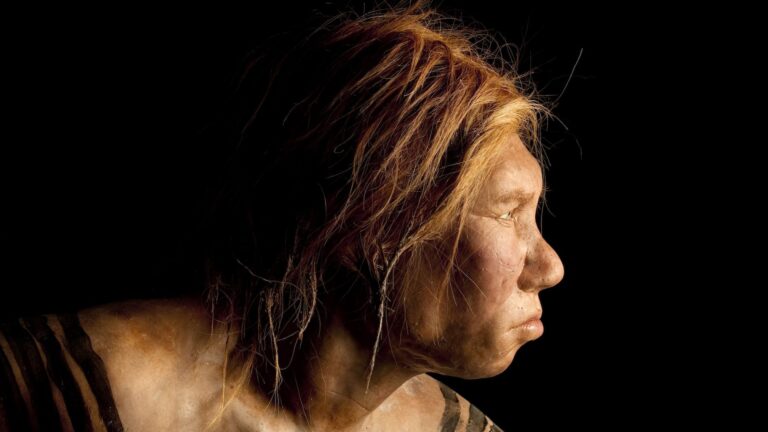Humans and our ancestors have been exposed to lead for up to 2 million years, researchers have discovered — overturning the belief that lead poisoning is a relatively modern phenomenon.
What’s more, widespread exposure to the toxic metal may have affected the evolution of our species’ communication abilities. This would have given Homo sapiens a key advantage over our cousins, the Neanderthals, who were more susceptible to lead’s toxic effects, the study suggests.
“Evolution often advances through adversity. Stressors like drought, food/water scarcity, or toxins don’t just threaten survival; they can also drive the selection of traits that make species more adaptable,” said study co-author Renaud Joannes-Boyau, professor and head of the Geoarchaeology and Archaeometry Research Group (GARG) at Southern Cross University in Australia. “Lead exposure may be one such hidden force in our evolutionary history,” he told Live Science in an email.
You may like
However, experts noted the study has limitations, as it estimates lead exposure by measuring lead levels in the teeth of many human and related species.
“It is not obvious whether the amounts of lead detected in the ancient teeth actually were enough to have an impact on health,” said John Hawks, an anthropologist at the University of Wisconsin–Madison who was not involved in the study. “Measurements of chemicals in tooth enamel have become incredibly sensitive. It may be that they are detecting such small levels that made no difference,” he told Live Science in an email.
Lead is toxic, and high levels of the metal in the body can cause multiple health issues, particularly in children, according to the Cleveland Clinic. It can damage the nervous system, particularly the brain, and other organs and cause severe learning and behavioral problems.
Nowadays, most lead poisoning is the result of human activities and products, such as paint, mining and smelting, according to the Environmental Protection Agency.
But lead also occurs naturally and can be “found throughout Earth’s crust, practically in all rocks, soils, sediments, and waterways at various concentrations,” the researchers wrote in the study, published Oct. 15 in the journal Science Advances.
“Animals, including humans, can be exposed to substantial levels of lead by drinking contaminated water, ingesting contaminated food, or inhaling polluted air (e.g., smoke from fire and dust storms),” the team added.
Contaminated teeth
In the new study, researchers looked at 51 fossilized teeth dating to between 1.8 million and 100,000 years ago from a variety of species, including Homo sapiens and our closest relatives, Neanderthals, as well as relatives such as Australopithecus africanus and Paranthropus robustus, and the extinct ape Gigantopithecus blacki.
You may like
“Teeth form incrementally during childhood, so they preserve a detailed record of early-life exposure, the period when the brain is most vulnerable,” Joannes-Boyau said.
The analysis revealed that 73% of the samples showed “clear signals of episodic lead exposure,” according to the study. This shows that lead exposure is not a modern phenomenon but has instead impacted human ancestors and relatives for millions of years.
Exposure levels varied, with some lower than modern industrial levels and some higher, but were generally enough to cause impacts in a young, developing brain, Joannes-Boyau noted.
Growing minibrains
To investigate how lead exposure may have shaped the development of Homo sapiens, the researchers created two different versions of brain “organoids” — miniature, simplified models of full-size human brains.
Each organoid version featured different variants of the gene NOVA1. Modern humans have a unique version of this gene that’s important for brain development and has also been linked to language skills. Neanderthals and other human relatives have a slightly different version of this gene.
When exposed to lead, the organoid with the modern NOVA1 gene showed greater resistance to the toxic metal than the organoid with the archaic variant. In particular, the Homo sapiens NOVA1 version seemed to help maintain the activity of a gene called FOXP2, which plays a crucial role in the development of human speech and language.
“When the brain is exposed to stressors like lead, the modern NOVA1 variant helps maintain stable FOXP2 function, protecting pathways linked to speech, communication, and cognition,” Joannes-Boyau said.
In contrast, in the brain organoid with the archaic variant of NOVA1, FOXP2 expression was altered when exposed to lead.
Study co-author Alysson Muotri, director of the University of California San Diego Sanford Stem Cell Education and Integrated Space Stem Cell Orbital Research Center, noted that this could have given humans an evolutionary advantage.
“Most likely, the modern variant NOVA1 emerged after lead exposure, but was rapidly selected as it gave us an advantage over other hominids,” such as Neanderthals, he told Live Science in an email. “This is another example of evolution in action.”
But the data on the NOVA1 gene is open to interpretation, Debbie Guatelli-Steinberg, professor in the Department of Anthropology at The Ohio State University, told Live Science in an email.
“The authors argue that the human NOVA1 variant gave humans a competitive advantage over other hominins, including Neanderthals,” Guatelli-Steinberg said. “This idea is speculative.”
Hawks said the study raises questions about how these ancient human ancestors and relatives were exposed to lead. “Did they take in lead when they used sparkly minerals as pigments?” Hawks said.” Did they absorb it in pollutants from burning? Or from the plant foods they ate? These are open questions. I’d love to know the answers.”
Neanderthal quiz: How much do you know about our closest relatives?
Images are for reference only.Images and contents gathered automatic from google or 3rd party sources.All rights on the images and contents are with their legal original owners.

